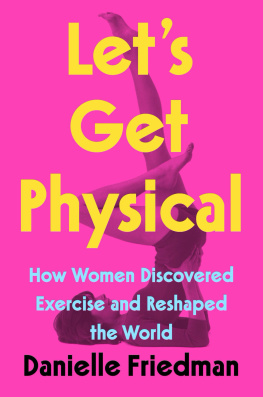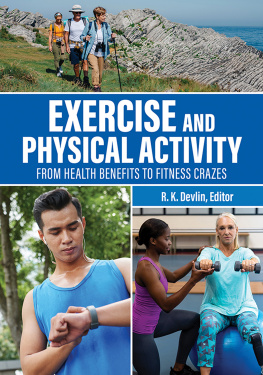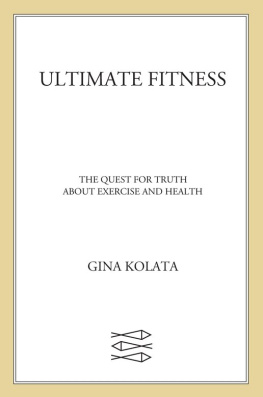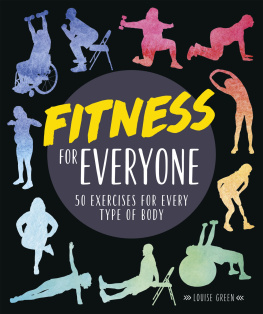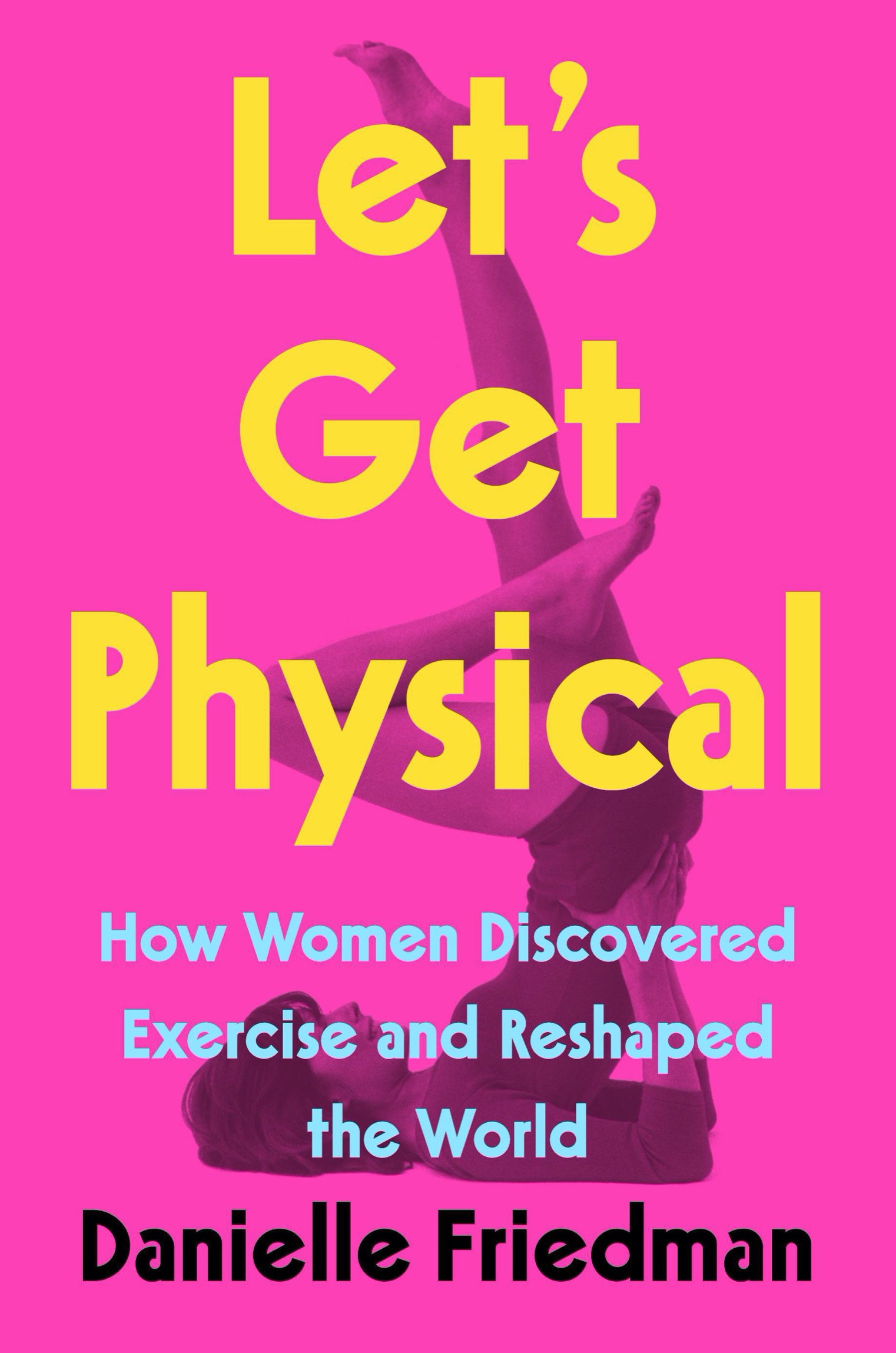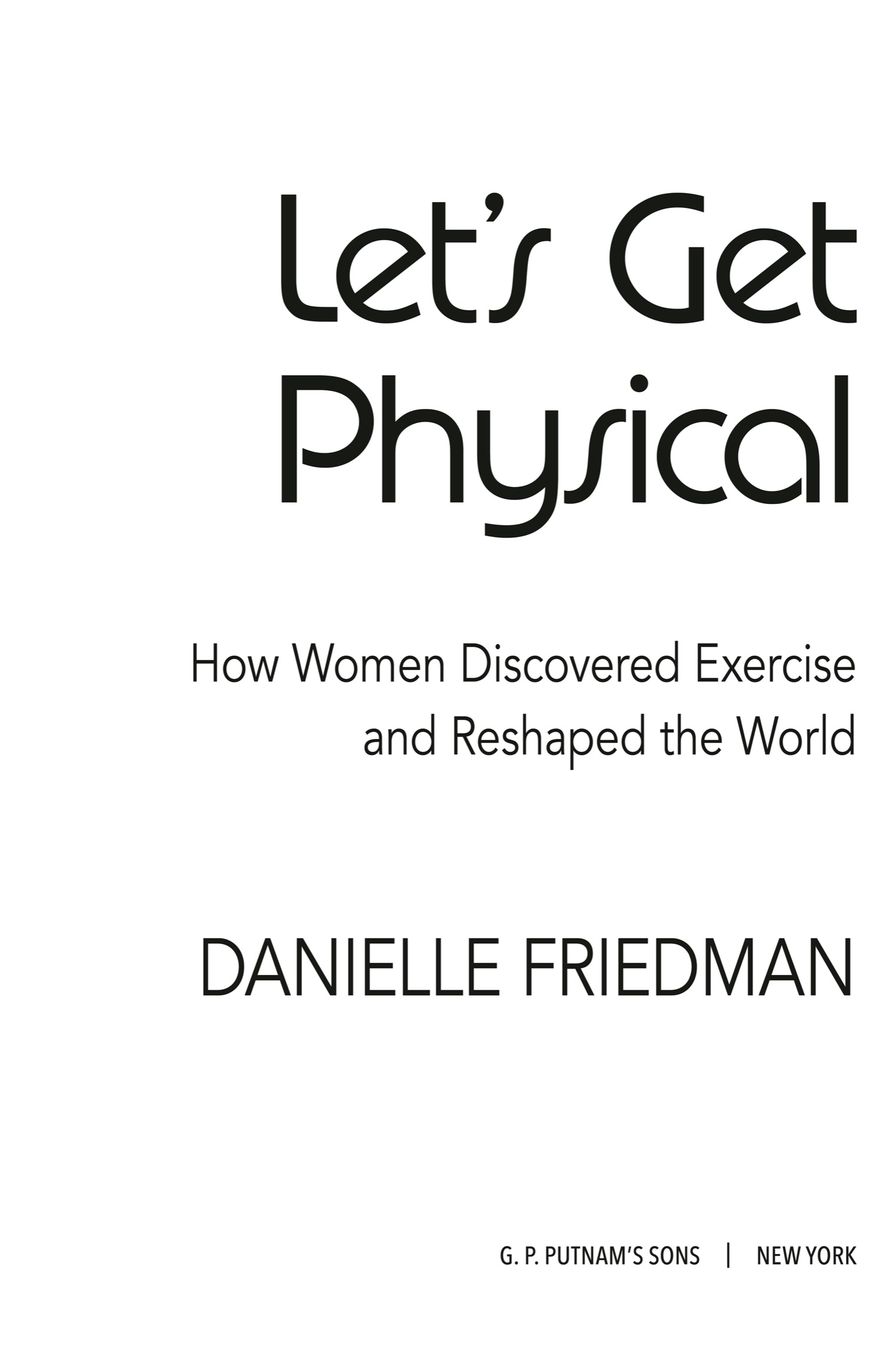G. P. Putnams Sons
Copyright 2022 by Danielle A. Friedman
Penguin supports copyright. Copyright fuels creativity, encourages diverse voices, promotes free speech, and creates a vibrant culture. Thank you for buying an authorized edition of this book and for complying with copyright laws by not reproducing, scanning, or distributing any part of it in any form without permission. You are supporting writers and allowing Penguin to continue to publish books for every reader.
and to my parents, Richard and Karen, for everything.
A movement is only composed of people moving. To feel its warmth and motion around us is the end as well as the means.
Exercise gives you endorphins.
Endorphins make you happy.
Happy people just dont shoot their husbands.
INTRODUCTION
Sweat
Five years ago I walked into a Pure Barre studio for the most predictable of reasons: I was getting married. In a few months I would be wearing a strapless lace gown in a hotel ballroom in my childhood hometown of Atlanta. For one night, I would be in a literal spotlight.
I was marrying a wonderful man, and I had spent my career as a journalist making the case that women should be valued for their inner selves and not their appearance. But weddings have a way of stirring up our most basic desires, and even feminists sometimes fantasize about greeting the world with a flat stomach and firm arms.
My local barre studio on Manhattans Upper East Side promised, in loopy letters on a sidewalk chalkboard, to LTBlift, tone, burnmy then thirty-five-year-old body into that of a ballerina. Sounded highly improbable and completely perfect.
I was drawn to the studio in the same way Id been drawn to my high schools cheerleading squad: desperate to join, but doubtful, in some core teen girl way, that I belonged. Or that I wanted to belong. This time, though, going for it wouldnt mean attempting a sad split in front of the popular girlsor giving up Model UN. So I slipped into the boutique fitness uniform of moisture-wicking everything, handed over my credit card, and swallowed hard.
When the class began, a ponytailed instructor wearing a headset microphone ushered me and a dozen other women to a ballet barre, where we moved our thighs up an inch, down an inch until our muscles trembled. On cue, I squeezed my seat (barre-speak for butt) until it spasmed and planked until I thought I might pass out. When I looked around the room, every other woman was stone-faced in her Lululemon. Would one of them catch me if I collapsed mid-squat? For the last few minutes, we lay on our backs and thrust our pelvises to a stripped-down version of Rihannas Umbrella.
At the end, I didnt die of embarrassment or exhaustion. I felt fantastic.
So I went back, again and again. The workout made me strong in parts of my body I hadnt realized were weak. It allowed me, for the first time in my life, to carry grocery bags without stopping to rest after three minutes. I didnt look like a ballerina, but I felt like onelight on my feet, energized, connected with my body in a totally new way. I came to understand that the other women in class werent unfriendly but intensely focused, in the one space where they had to focus only on themselves. I, too, developed a resting barre face.
A few months into my new Pure Barre routine, I became curious: Where did the barre workout, which had become a phenomenon (and multibillion-dollar industry) in this country, come from? One internet rabbit hole led to another, and I discovered an origin story far richer than I was expecting. What had once seemed like a familiar rite of passage suddenly took on the feeling of a mystery waiting to be uncovered.
The workout was created in 1959 by Lotte Berk, a free-love revolutionary and former dancer who wanted to help women improve their sex lives. (This explained why many of the exercises in class felt comically erotic, from pelvic tucks to a move called knee dancing.) Almost as radical at the time, Berk encouraged women to use exercise to strengthen their bodyto create a corset of muscle. Her London studio was one of the first-ever boutique fitness studios, and she attracted a celebrity clientele of actresses, writers, and on one occasion Barbra Streisand, who allegedly never removed her hat.
I wrote about this history in a feature for New York magazines The Cut titled The Secret Sexual History of the Barre Workout, and the story went viral. Few of the workouts devotees, including studio owners and instructors, knew about its roots. Some were scandalized, while others were delighted. For me, however, researching the piece opened my eyes to more than one workouts wild origins: It felt like unlocking a portal to a hidden feminist history.
While fitness culture today can feel sleek and sometimes sterile, the story of how womens exercise developed in the twentieth century until now, I discovered, is weird and messy and awkward and glamorous. Its rich with cinematic characters and forgotten pioneers of what we now call self-care. But more than that, its the story of a paradigm shift in the way women, so long accepted as the weaker sex, came to view their bodies. Because when women first began exercising en masse, they were participating in something subversive: the cultivation of physical strength and autonomy.
Today, I exercise for energy, for strength, and for my mental health. I exercise to feel the endorphin high of accomplishment and to manage lifes lows. I exercise to remind myself I can persevere. And I am not alone. Most of the women I knowas well as the many women across the country I interviewed for this bookconsider regular physical activity essential to their emotional and physical well-being. My mom, who is in her early seventies, calls her weekly cardio dance classes a surefire source of joy.
Before the coronavirus pandemic, some 73 million Americans belonged to at least one gym, studio, or health club. The pandemic shook the fitness industry, forcing nearly 20 percent of brick-and-mortar spaces to permanently close. But it also led to a dramatic rise in home exercise: By mid-2020, more than 80 percent of fitness consumers had livestreamed workouts, compared with only 7 percent before the global lockdown began. For many, amid so much unthinkable tragedy, the pandemic brought a newfound appreciation for what their bodies could do, beyond how their bodies looked.
Womens desire to test their strength and endurance through exercise is now widely accepted in this country. But until relatively recently, the premise that an average woman would regularly break a sweat in the name of healthor even beauty or weight losswould have shocked most Americans.

